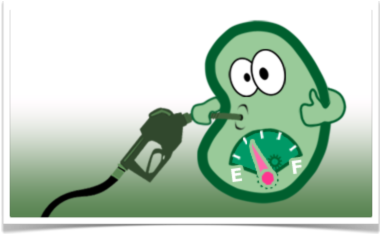Team:TU Delft/Project/sensing
From 2010.igem.org
(→Sensing) |
(→Sensing) |
||
| Line 5: | Line 5: | ||
Alkane-degrading bacteria have developed different ways to accommodate alkane oxidation. In order to regulate alkane oxidation in ''E. coli'', genes encoding a regulatory mechanism controlled by alkane levels must be incorporated. High alkane levels can then be used to activate expression of specific genes involved in the alkane degradation. Two types of regulatory constructs will be created in the form of BioBricks to achieve this. The first construct proposed is based on a catabolic repression pathway encoded by the ''P.putida Gpo1'' OCT plamid. The second mechanism makes use of a global regulator protein from ''E.coli'' which is known to bind to regions of promoters known to activate genes involved in the degradation of non-glucose carbon sources. | Alkane-degrading bacteria have developed different ways to accommodate alkane oxidation. In order to regulate alkane oxidation in ''E. coli'', genes encoding a regulatory mechanism controlled by alkane levels must be incorporated. High alkane levels can then be used to activate expression of specific genes involved in the alkane degradation. Two types of regulatory constructs will be created in the form of BioBricks to achieve this. The first construct proposed is based on a catabolic repression pathway encoded by the ''P.putida Gpo1'' OCT plamid. The second mechanism makes use of a global regulator protein from ''E.coli'' which is known to bind to regions of promoters known to activate genes involved in the degradation of non-glucose carbon sources. | ||
| - | The BioBricks including these mechanisms will be implemented in ''Escherichia coli K12'' and characterized and evaluated on it regulating capabilities controlled by alkane levels. The complete alkane sensing mechanism was also captured in a [https://2010.igem.org/Team:TU_Delft#page=Modeling/HC_regulation hypothetical model], and experimental results of one of the promoters (pCaif) were analyzed using second [Team:TU_Delft#page=Modeling/pcaif-model experimental model]. | + | The BioBricks including these mechanisms will be implemented in ''Escherichia coli K12'' and characterized and evaluated on it regulating capabilities controlled by alkane levels. The complete alkane sensing mechanism was also captured in a [https://2010.igem.org/Team:TU_Delft#page=Modeling/HC_regulation hypothetical model], and experimental results of one of the promoters (pCaif) were analyzed using second [[Team:TU_Delft#page=Modeling/pcaif-model|experimental model]]. |
<html><center><img src="https://static.igem.org/mediawiki/2010/0/00/TU_Delft_project_navigation.jpg" usemap="#projectnavigation" border="0" /></center><map id="projectnavigation" name="projectnavigation"><area shape="rect" alt="Characterization" title="" coords="309,3,591,45" href="https://2010.igem.org/Team:TU_Delft#page=Project/sensing/characterization" target="" /><area shape="rect" alt="Results" title="" coords="609,3,891,44" href="https://2010.igem.org/Team:TU_Delft#page=Project/sensing/results" target="" /><area shape="rect" alt="Parts" title="" coords="9,3,290,44" href="https://2010.igem.org/Team:TU_Delft#page=Project/sensing/parts" target="" /></map></html> | <html><center><img src="https://static.igem.org/mediawiki/2010/0/00/TU_Delft_project_navigation.jpg" usemap="#projectnavigation" border="0" /></center><map id="projectnavigation" name="projectnavigation"><area shape="rect" alt="Characterization" title="" coords="309,3,591,45" href="https://2010.igem.org/Team:TU_Delft#page=Project/sensing/characterization" target="" /><area shape="rect" alt="Results" title="" coords="609,3,891,44" href="https://2010.igem.org/Team:TU_Delft#page=Project/sensing/results" target="" /><area shape="rect" alt="Parts" title="" coords="9,3,290,44" href="https://2010.igem.org/Team:TU_Delft#page=Project/sensing/parts" target="" /></map></html> | ||
Latest revision as of 12:50, 27 October 2010
Sensing
Alkane-degrading bacteria have developed different ways to accommodate alkane oxidation. In order to regulate alkane oxidation in E. coli, genes encoding a regulatory mechanism controlled by alkane levels must be incorporated. High alkane levels can then be used to activate expression of specific genes involved in the alkane degradation. Two types of regulatory constructs will be created in the form of BioBricks to achieve this. The first construct proposed is based on a catabolic repression pathway encoded by the P.putida Gpo1 OCT plamid. The second mechanism makes use of a global regulator protein from E.coli which is known to bind to regions of promoters known to activate genes involved in the degradation of non-glucose carbon sources.
The BioBricks including these mechanisms will be implemented in Escherichia coli K12 and characterized and evaluated on it regulating capabilities controlled by alkane levels. The complete alkane sensing mechanism was also captured in a hypothetical model, and experimental results of one of the promoters (pCaif) were analyzed using second experimental model.

 "
"
